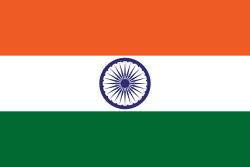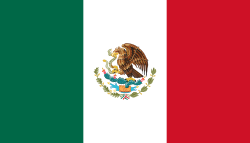Top 10 Most Populous Countries In The World

Various parameters can be used to rank different countries worldwide. Population size is one such factor. Recent reports from the World Population Review indicate that India has surpassed China to become the most populous country globally. As of the end of 2022, India's population stood at 1.417 billion, whereas China's population was slightly less, declared on January 17. By January 18, India's population had increased to 1.423 billion. This article presents a list of the ten most populous countries in the world.
China and India both have populations exceeding one billion, solidifying their positions as the two most populous countries globally. The United States holds the third position with around 325 million residents. The BRIC nations (Brazil, Russia, India, and China) all feature among the top ten most populous countries, underscoring the significance of their large populations in driving their economic growth as emerging economies projected to lead in the 21st century.
Despite their classification as developing countries by the International Monetary Fund, Nigeria, Bangladesh, and Mexico boast substantial populations, numbering over 190 million, nearly 165 million, and approximately 129 million, respectively. This highlights that the challenges faced by developing nations are spread across multiple continents.
Interestingly, several of the world's major economies, particularly in Europe, have relatively modest populations. For instance, the United Kingdom, Germany, France, and Italy all rank among the top ten largest global economies but have populations of less than 100 million, ranging from 82 million (Germany) to just under 60 million (Italy).
There are different countries in the world with so much diversity, languages and religion but today we will explore the top 10 most populous countries in the world.
Top 10 Most Populous Countries In The World
- China – 1.43 Billion
- India – 1.37 Billion
- United States – 329 Million
- Indonesia – 270 Million
- Pakistan – 216 Million
- Brazil – 211 Million
- Nigeria – 202 Million
- Bangladesh - 167 million
- Russia - 146 million
- Mexico - 128 million
1. China – 1.43 Billion
READ ALSO » Top 10 Most Populous Tribes In Africa 2023
The crown of the world's most populous country lies in China. Nearly 20% of the world's population, or 18.59%, live within its borders. The total area is 9,388,211 km² and the population density is 153 people per km². The majority of China's population live in large cities such as Shanghai and Beijing, with an average age of 37 years.
Beijing, the capital, has a population of about 11,716,620, while Shanghai, China's largest city, has a population of 22,315,474. Growth in China's demographic has slowed significantly since the introduction of the one-child policy. The population is expected to continue declining.
For now, we just have to wait and see what happens. India is keen to claim the title of the world's most populous country.
2. India – 1.37 Billion
India has expanded substantially over the past 40 years, with an increase of approximately 181.5 million people between 2001 and 2011.
India's population equals to 17.71 of the world's total population, and the population density is extremely high(461 people per square kilometer). The majority of the population lives in large cities and urbanized areas. About 34.5% of India's population live in major cities such as Mumbai, Delhi and Bangalore. Mumbai, the capital of India, has a population of 12.5 million. The median age for India is 27.1 years.
As India's population grows, it is projected to surpass China to become the world's most populous country by 2024.
3. United States – 329 Million

The population of the United States is 329 million. It is the third most populous country in the world. America has a total area of 9,147,420 km², which is quite large compared to the other countries on the list.
READ ALSO » Top 10 Most Visited Countries In The World 2024
The population density is 36 people per km², or 82.5% of the population lives in cities.
The most populous states are California and Texas. There are 39.5 million people in California and 28.7 million in Texas. New York is the largest city in the United States, with a population of approximately 8.4 million.
The US population is projected to grow to 438 million by 2050.
4. Indonesia – 270 Million

The current population Indonesia is 270 million people, with a population density of 149 people per square kilometer.
Indonesia is made up of about 17,000 islands, with a total area of 1,811,570 km².
About 56.7% of Indonesia's population live on the most populous island, Java. Indonesia's median age is 28.8 years and its population is 3.51% of the world's total population. Indonesia has 11 cities with a population of more than 1 million and the capital city, Jakarta, has a population of 10.6 million. Indonesia's population has doubled in the past 40 years, from 119 million in 1971 to 240 million in 2010.
The country's population is expected to continue to grow in the upcoming decades.
5. Pakistan – 216 Million

Pakistan has a population of just over 216 million, with a population density of 281 per square kilometer. The total area of the country is 770 880 km² and most of the population lives in large cities and urbanized areas. Pakistan has 10 cities with a population of over 1 million.
READ ALSO » Top 10 Most Ethnically Diverse Countries In The World
The two largest cities are Karachi and Lahore. Karachi has a population of 14,916,456 people and Lahore has a population of 11,126,285. Pakistan's current median age is 22.0 years and its population is 2.81% of the world's total population.
Pakistan's current growth rate is about 2%, but is expected to drop to 1% by 2050. The
population is projected to be around 245 million by 2030.
6. Brazil – 211 Million

The largest country in South America, with a population density of 24.66 per km². The largest city is Sao Paulo, with a total population of 11.9 million and the capital, Brasilia, with a population of 2.8 million.
Brazil has a total area of 8 358 140 km², with about 25 people per km². Brazil's fertility rate has fallen sharply since 1970 as families choose to wait longer to have children and more Brazilian women come to work.
The average fertility rate per woman today is 1.77, down from 4 births per woman in the 1970s. Brazil is expected to continue to grow at a slow pace through 2050, before the effects of declining fertility rates begin to come into effect and the population will become tardy or smaller. Its average age is 31.8 years, 87.4% of the population live in cities.
7. Nigeria – 202 Million
The current population of Nigeria is about 202 million. Over 50% of the
population, or 51.2%, settle in cities. Nigeria has numerous cities, yet 5 of which have a population of over 1 million.
Lagos is the capital of Nigeria and the largest city in Nigeria. About 17.5 million people live there. Nigeria has a median age of 17.9 and a population of approximately 221 people per km². Nigeria has a total area of 910,770 km² and a population of 2.61% of the world's total population. Nigeria's population is projected to reach 206 million by 2020 and 264 million by 2030.
If this current tendency continues, Nigeria could surpass 300 million people by 2036.
8. Bangladesh - 167 million

Bangladesh territory is 130 170 km², with about 1250 people per 1 km².
Dhaka is Bangladesh's capital city with a population of 14.4 million. Bangladesh's population is 2.11% of the world's total population. Bangladesh's median age is 26.1 years and the current growth rate is around 1%.
Bangladesh's population is anticipated to reach around 170 million by 2020 and 186 million by 2030
9. Russia - 146 million

Russia with a population of 146 million and a total area of 16,376,870 km². The population density of Russia is about 9 people per km². Russia's population is correspondent to 1.89% of the world's population, with an average age of 38.8 years in Russia.
One parallel between Russia and other countries is that the majority of Russia's population live in cities such as Moscow, the capital city of 12.1 million people.
Russia's population will not increase in the short term, in fact it will decrease slowly over the next decade, with many experts predicting that the total population will reach 140 million by 2030.
Russia's authorities has introduced policy which offer cash rewards to young mothers when they have three or more children. Thus, let's wait and see what happens in the forthcoming time.
10. Mexico - 128 million

Rounding out the 10 Most Populated Countries in the World is Mexico. With a current population of 128 million, Mexico incredibly overtook Japan and the Philippines to enter the top 10.
Mexico encompasses an area of approximately 1,972,550 square meters and is home to approximately 1.63% of the world's population. The population density is about 66 people per square kilometer, with the majority of the population being 2554 years old.
Mexico City, Itzapalpa and Esetepec are the most populous metropolitans within its border, with a total population of approximately 16 million.
